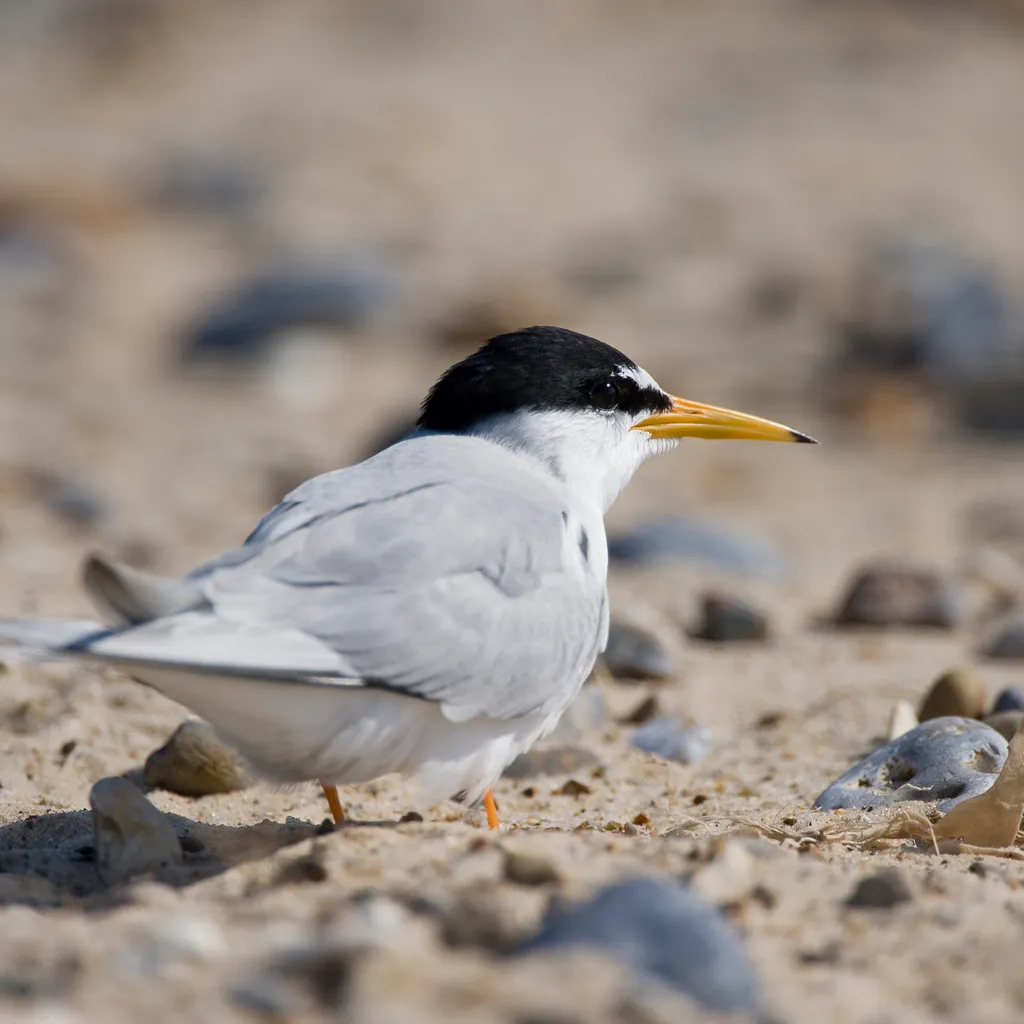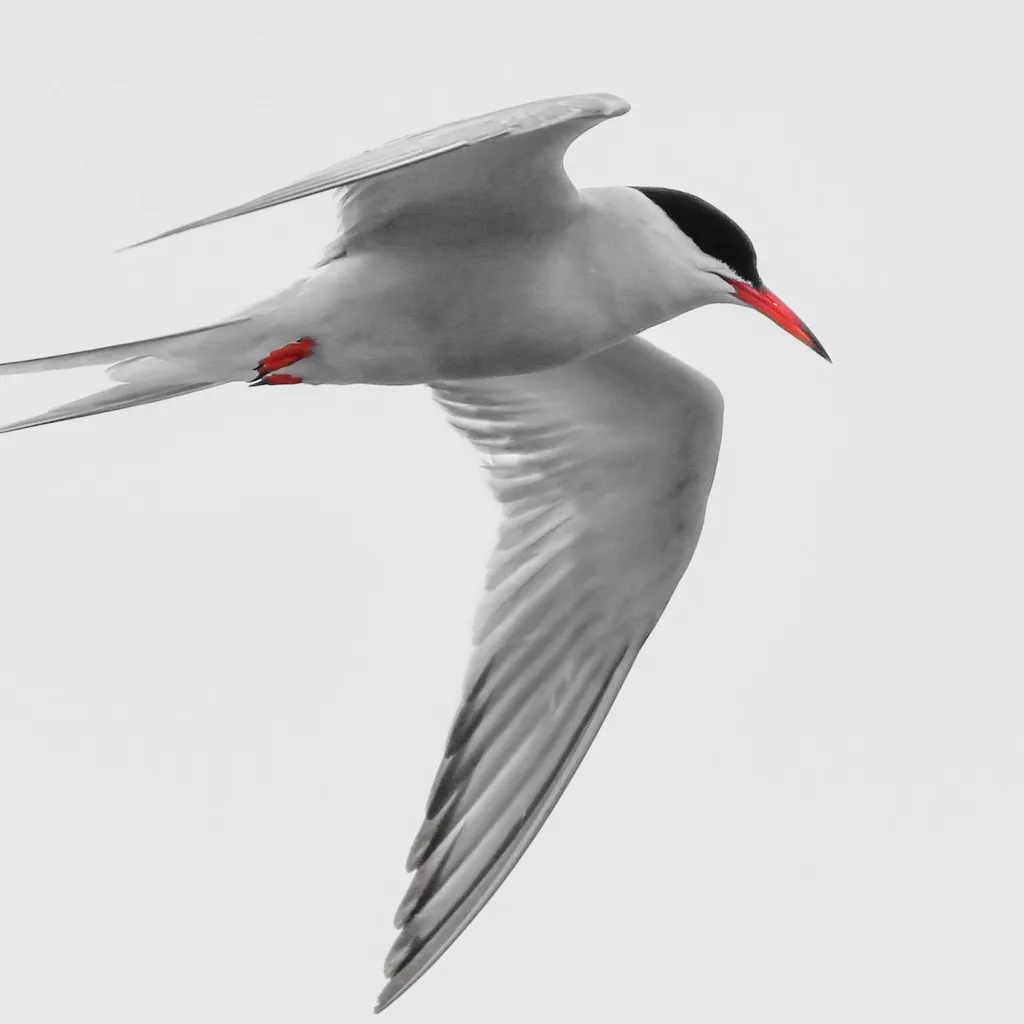The common tern and little tern are migratory birds with spectacular aerial displays and noisy colonies. Found across the world, near open water and coastlines, they spend their summers visiting the UK and Europe, whilst their winters are spent in West Africa. Terns are a subfamily (Sternidae) of the wider gull family (Laridae). Yet, despite being from the same family, the little and common tern have some strong individual characteristics.
How to tell the difference between common terns and little terns

The little tern is one of the UK’s smallest seabirds, weighing in at 57g, which is the equivalent of a tennis ball. These birds have a silvery back and a white belly. They have a white forehead with a black cap and a yellow bill with a black tip. Their legs are yellow/orange in colour.

The common tern is bigger in size and more likely to be seen by inland water bodies as well as coastal regions. This bird is slightly harder to distinguish from other terns than the little tern, mainly due to it its size. Silvery grey back and white belly, this bird has a black cap, and its bill is more orangey-red in colour with a black tip. Their legs are red in colour.
Do common terns and little terns share the same habitat?
Common terns are often found inland, near water sources such as wetlands, gravelly shores of lakes and reservoirs, whereas little terns' nest exclusively in coastal habitats. Despite the common terns' British breeding range expanding to inland areas, there has been a loss of numbers in coastal colonies.
There has also been a decline in little tern numbers in recent years. These changes are due to both environmental and human-made reasons. One being climate change causing unusually high tides and flooding nesting areas. Another is human disturbance on the coastline from recreational activities, which can result in disturbed adult terns leaving their nest – this leaves eggs and chicks vulnerable to cold and predation. Living near fresh and saltwater means that both birds feed by hovering over bodies of water and plunge diving from 10-15 metres for their fish prey.
Little terns generally return to the UK in April to coastal breeding colonies. Courtship displays are elaborate aerial chases high in the sky and involve the male carrying fish to attract a mate before descending back to the beach. These little birds create nests called scrapes. Scrapes are shallow bowls made by the terns scraping their bellies on sand and shingle surfaces.
Common terns also return to the UK in April with pairs initially bonding in aerial courtship, this continues back on the ground through males displaying their wings and offering gifts of fish to the females. Similarly to the little terns, these birds also create shallow scrapes for nesting.
Where to find them?
Little tern colonies are now often protected by temporary fencing and staff or volunteers from conservation organisations monitoring the birds throughout the breeding season. When visiting sites, it’s best to research the accessibility before travelling and to respect the birds you are viewing - therefore adhering to any directions or signage that may be in place.
Two of the largest little tern colonies in the UK are at Winterton in East Norfolk and Gronant in North Wales. While a few of the largest common tern colonies in the UK are South Walney in Cumbria and Cemlyn Bay reserve, North Wales.
